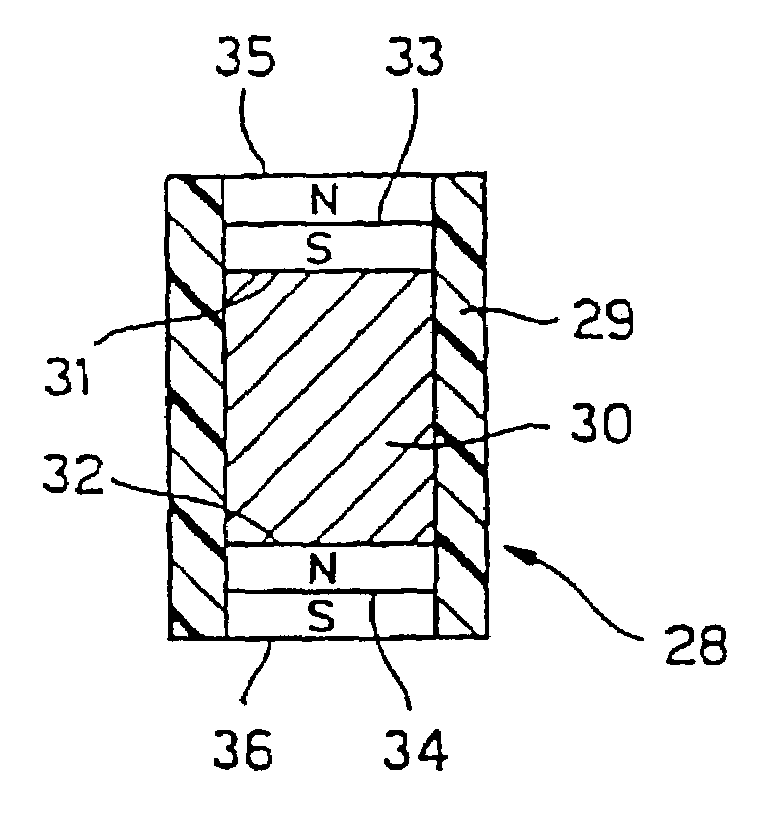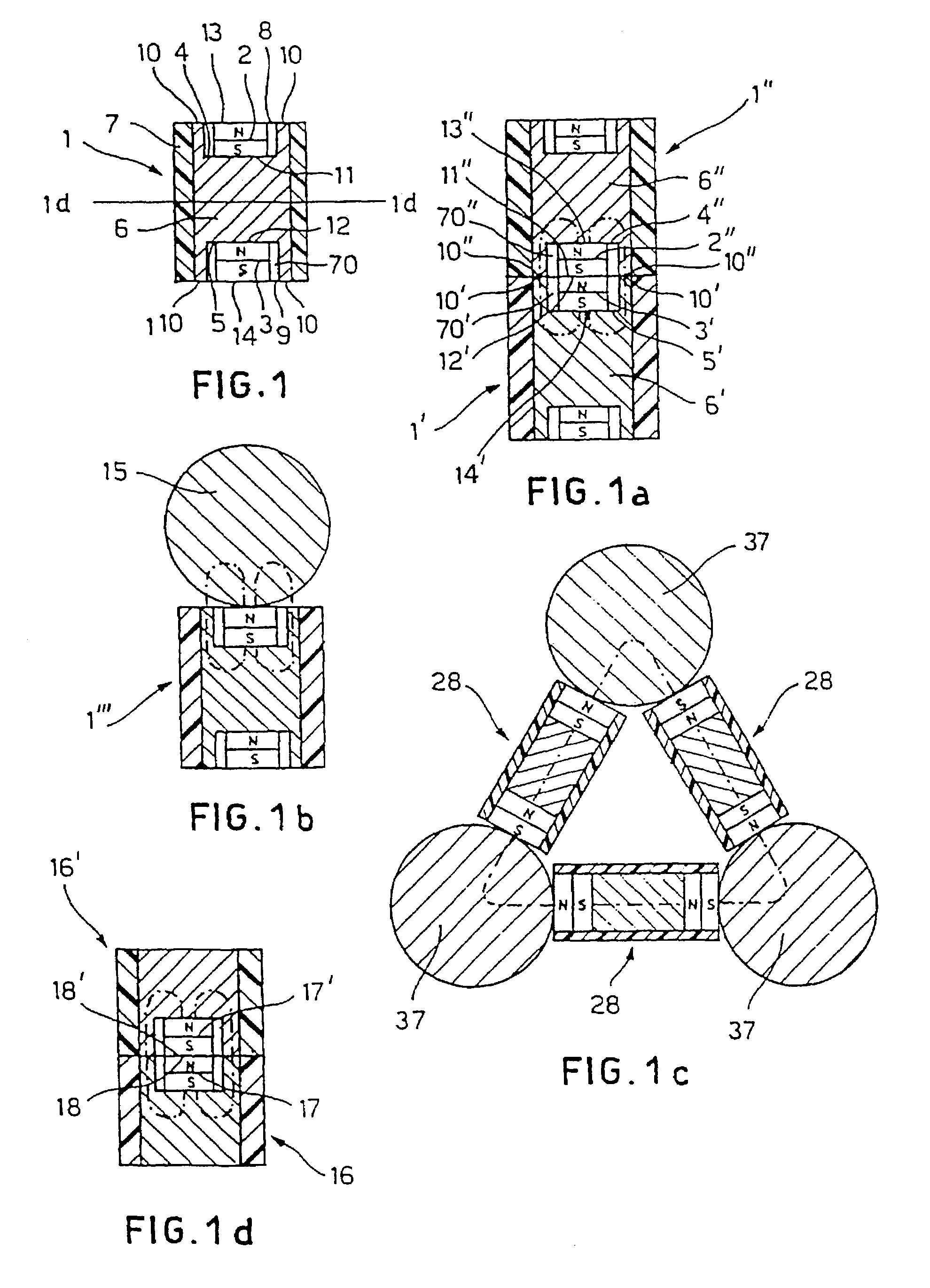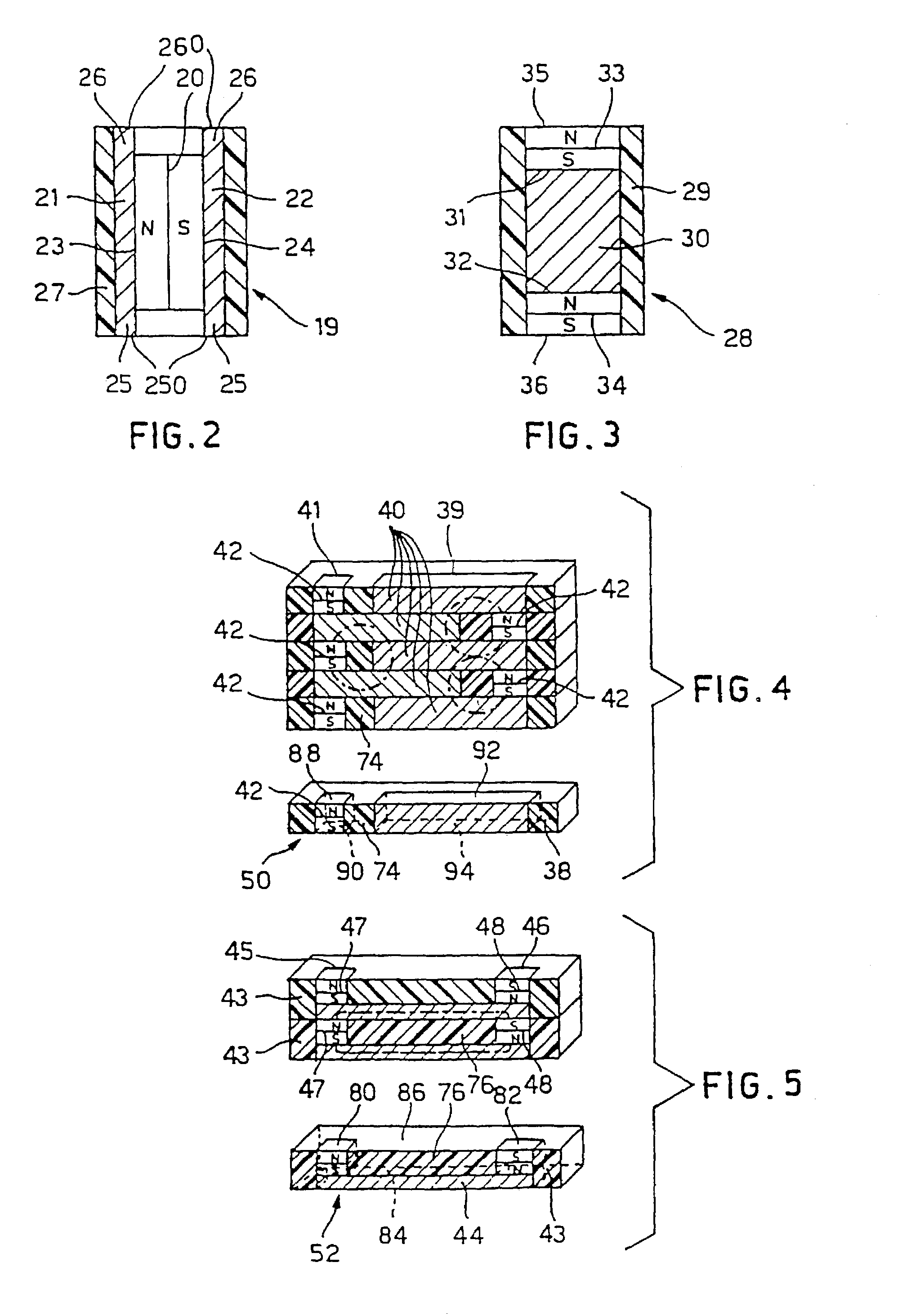Modules creating magnetic anchorage assemblies and relevant assemblies
- Summary
- Abstract
- Description
- Claims
- Application Information
AI Technical Summary
Benefits of technology
Problems solved by technology
Method used
Image
Examples
Embodiment Construction
[0022]Complete use of the magnetic voltages installed allows, on a par with the magnetic material used, a higher force of attraction between the modules.
[0023]It is also clear that the short-circuiting which can be achieved by appropriately combining the modules enables, again on a par with the magnetic material used, more flexible and complex structures with unusual shapes to be built, given that the greater force of cohesion considerably increases self-support thereof.
[0024]Another diversifying and advantageous aspect is definitely the fact that the permanently magnetic modules with ferromagnetic yoke and the totally ferromagnetic modules are partially or very often totally free of the obligation of being subjected to any predetermined positioning in order to be reciprocally connected and, on the contrary, continuous movement of one module on the other is made possible without interruption.
[0025]These and further advantageous aspects of our invention are made even clearer by readi...
PUM
 Login to View More
Login to View More Abstract
Description
Claims
Application Information
 Login to View More
Login to View More - R&D
- Intellectual Property
- Life Sciences
- Materials
- Tech Scout
- Unparalleled Data Quality
- Higher Quality Content
- 60% Fewer Hallucinations
Browse by: Latest US Patents, China's latest patents, Technical Efficacy Thesaurus, Application Domain, Technology Topic, Popular Technical Reports.
© 2025 PatSnap. All rights reserved.Legal|Privacy policy|Modern Slavery Act Transparency Statement|Sitemap|About US| Contact US: help@patsnap.com



